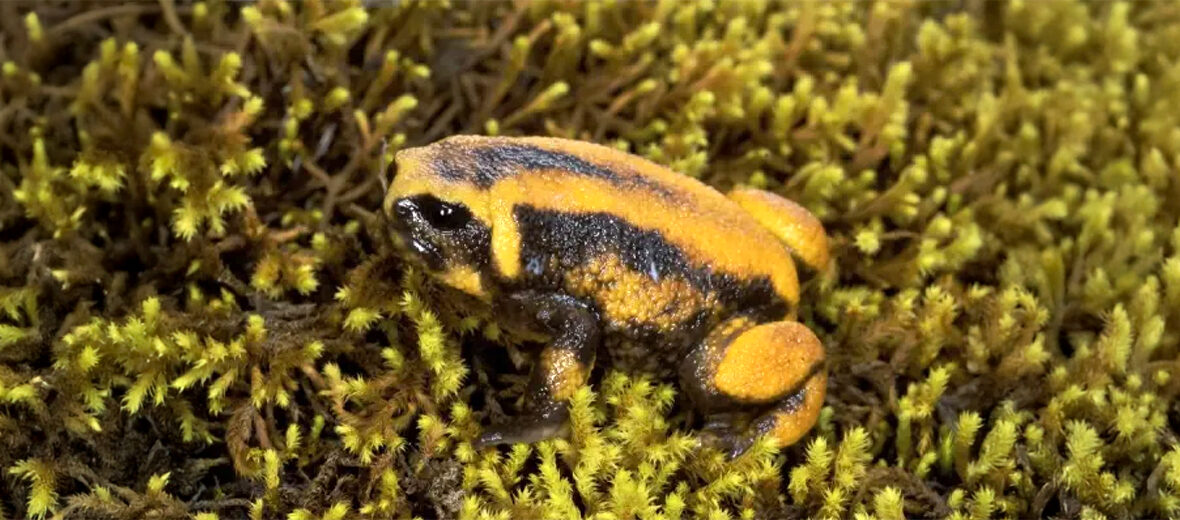
The Bale Mountains tree frog is the only species in the monotypic genus Balebreviceps. They can only be found in the Bale Mountains of Ethiopia. These frogs prefer tree heath woodlands near the timberline as well as partly cleared mixed forests. Bale Mountains tree frogs are threatened by habitat loss and destruction at the hands of residential and commercial developments, farming, ranching, and deforestation via logging; invasive species, and with them predation and disease; and climate change, which can bring about habitat alteration via severe storms. The IUCN lists these frogs as Critically Endangered. Their population trend is also decreasing.
First the Stats…
Scientific name: Balebreviceps hillmani
Weight: Up to .15+ ounce
Length: Up to 1.06 inches
Lifespan: Unknown
Now on to the Facts!
1.) When threatened, these frogs will lower their head and inflate their body with air. They then raise their body from the ground by stiffening and extending their limbs. This is all in an effort to look more formidable.
2.) They don’t face many natural predators. Humans are their greatest threat to survival.
3.) These frogs dwell at elevations of up to 10,499 feet.
4.) They lack a vocal sac and both males and females also don’t seem to have any auditory ability.
5.) Bale Mountains tree frogs were first discovered by M.J. Largen and R.C. Drewes in 1986.
But wait, there’s more on the Bale Mountains tree frog!
6.) These frogs are found among boulders, compost, under logs, and around mosses growing on branches.
7.) This species is assumed to build a terrestrial nest to lay its eggs. The eggs do not undergo an aquatic larval (tadpole) stage, instead hatching as miniature versions of the adults.
Did you know…?
Like so many other amphibians, Chytrid has been found on these frogs, although its impact is unknown at this time.
8.) It is estimated that up to 56 eggs are laid during the wet season, which lasts from March – October.
9.) Due to their moist environment, desiccation (drying out) is not an issue.
10.) Their habitat is a protected area and also has a conservation program, however lacks appropriate management. There definitely needs to be an improvement in management in order to protect their habitat from exploitation, going forward, or these frogs will be lost forever.
Be sure to share & comment below! Also, check out the Critter Science YouTube channel. Videos added regularly!

Want to suggest a critter for me to write about? Let me know here.
Some source material acquired from: Wikipedia & IUCN
Photo credit: Michele Menegon



